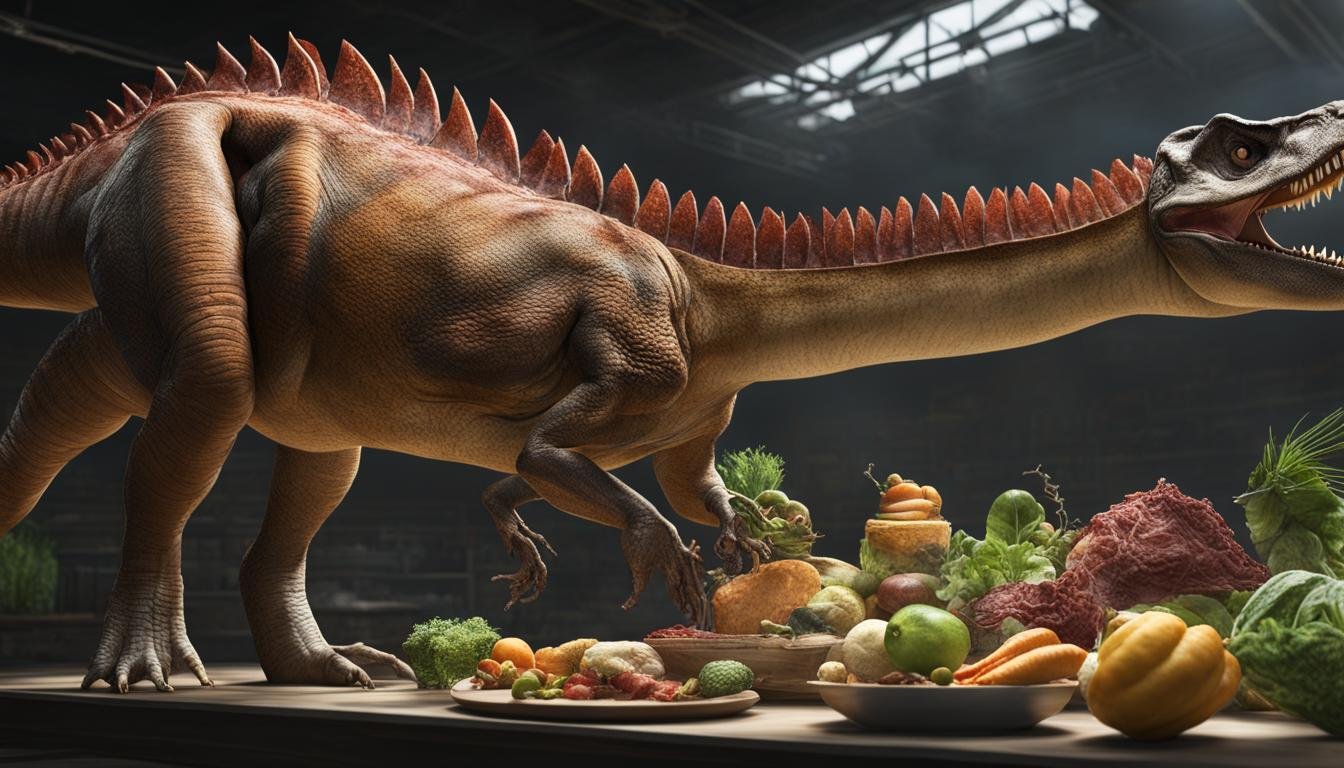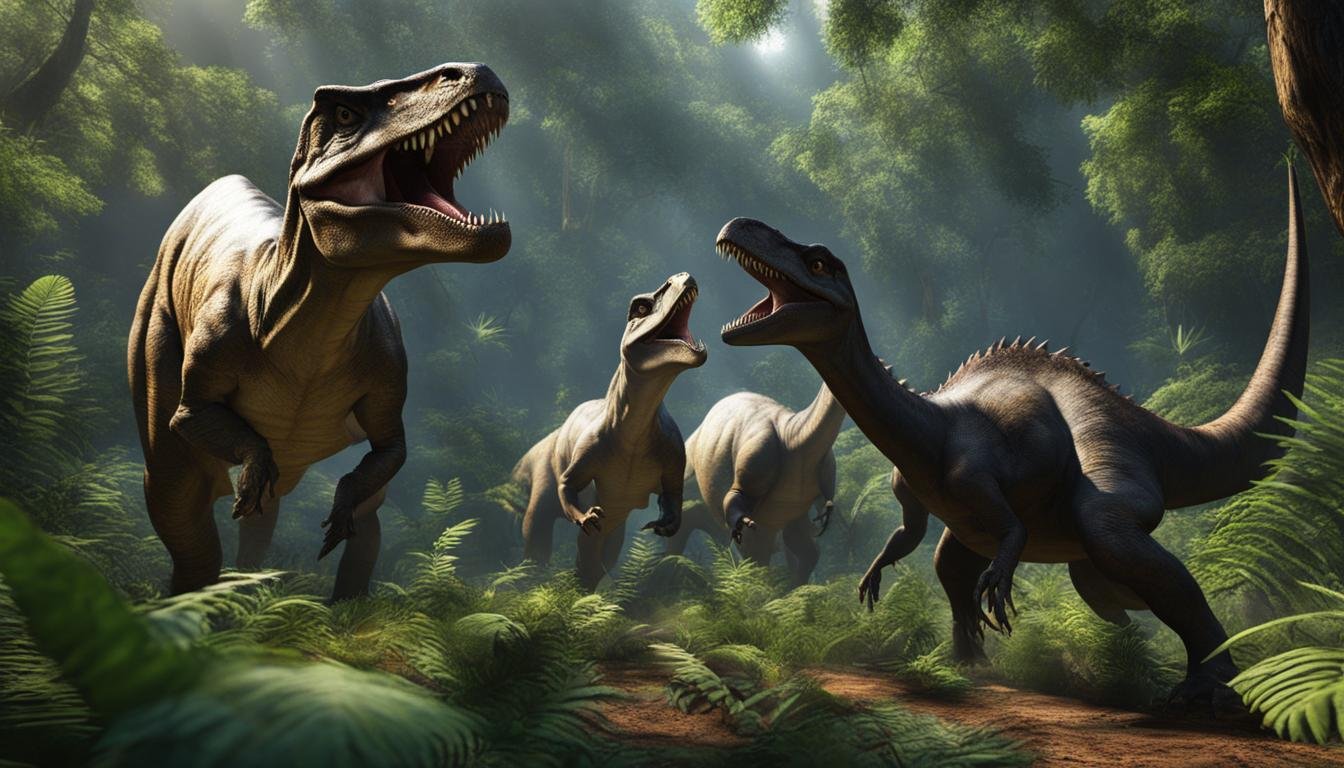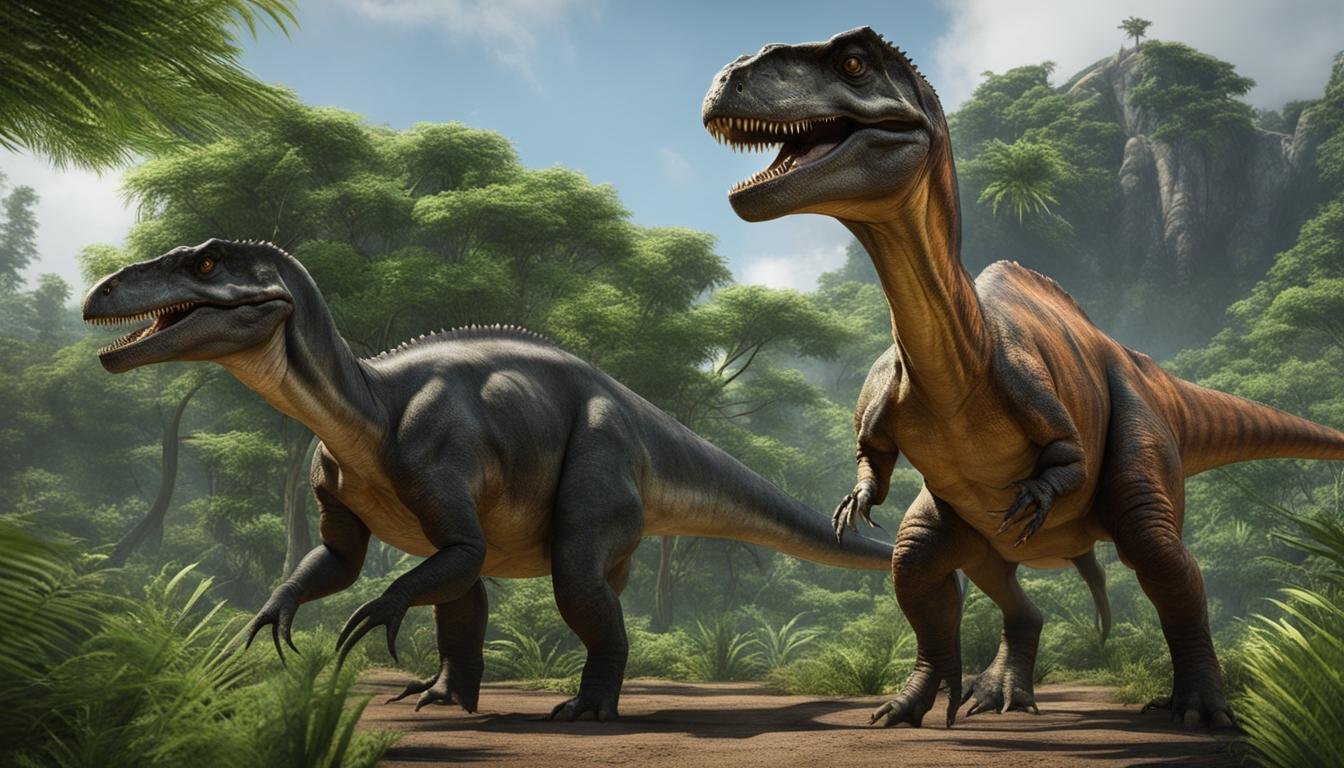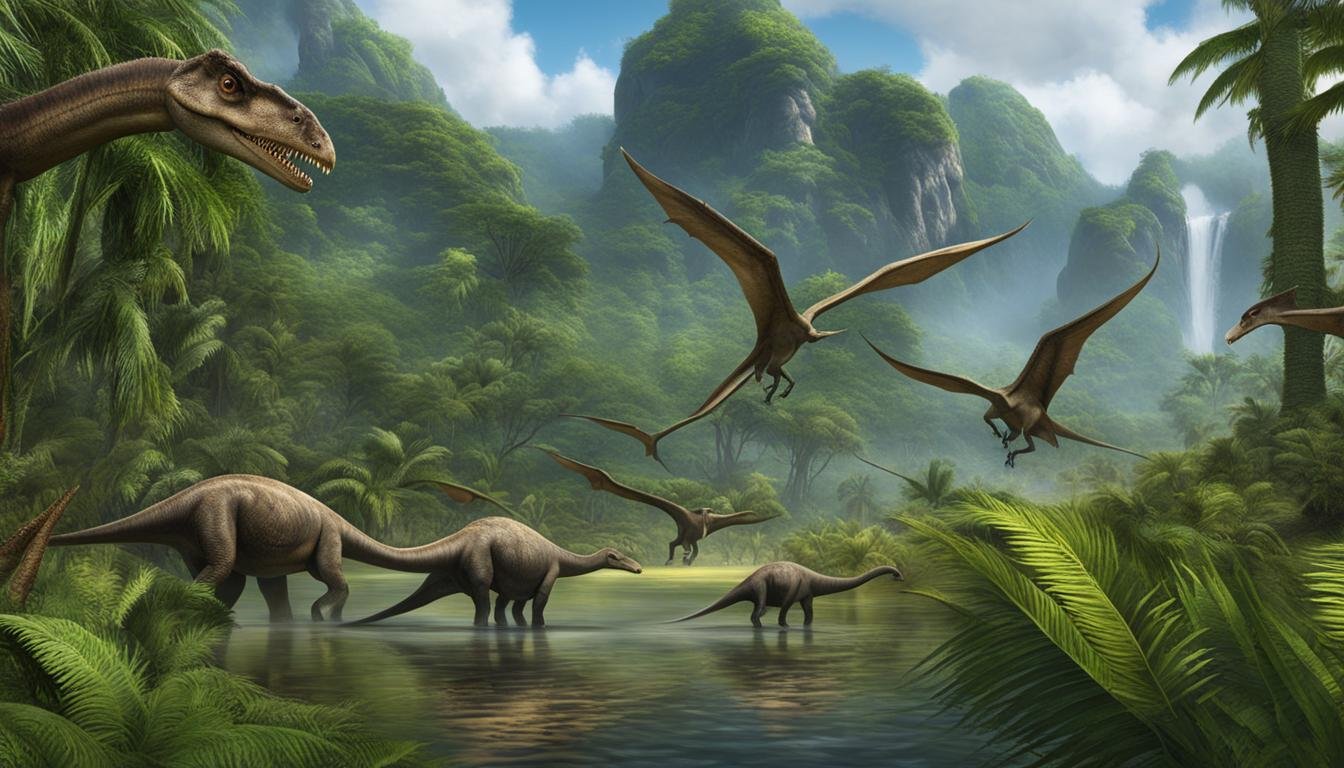Welcome to our fascinating exploration of dinosaur digestive tracts and diet! In this article, we delve into the intricacies of these prehistoric creatures’ gastrointestinal systems, examining how their unique adaptations influenced their feeding habits, digestive efficiency, and overall ecology. From teeth morphology to jaw structure, we’ll uncover the secrets of dinosaur digestion.
Carnivore’s Digestive System
Carnivorous dinosaurs, such as Tyrannosaurus, had a unique digestive system that was adapted to their meat-based diet. One of the key features of their digestive system was their serrated teeth. These sharp, serrated teeth were designed to efficiently slice through flesh, allowing carnivores to tear apart their prey. The serrations on their teeth acted like cutting edges, enabling them to quickly and effectively consume meat.
Another important aspect of a carnivore’s digestive system was their jaws. The jaw structure of carnivorous dinosaurs was specifically adapted to help them capture and consume their prey. Their jaws were powerful and had curved back teeth, which prevented their prey from escaping. This feature allowed them to firmly hold onto their prey while tearing it apart with their sharp teeth.
In terms of digestion, carnivores had a relatively simple and compact digestive system. Meat is easier to digest compared to plant material, so they did not require a large digestive system like herbivorous dinosaurs. Their stomachs were smaller and more efficient at breaking down meat, allowing for faster digestion and absorption of nutrients.
Comparison of Carnivore’s Digestive System
| Digestive Feature | Tyrannosaurus (Carnivore) | Stegosaurus (Herbivore) |
|---|---|---|
| Tooth Structure | Serrated teeth for slicing meat | Flat, blunt teeth for grinding plant material |
| Jaw Structure | Curved back teeth to prevent prey from escaping | Long, narrow jaws for efficient plant consumption |
| Stomach Size | Smaller stomach for faster digestion of meat | Larger stomach to process tough plant material |
“The serrated teeth and powerful jaws of carnivorous dinosaurs allowed them to efficiently consume and digest meat, providing them with the necessary nutrients for survival.” – Dr. Jane Paleontologist
Herbivore’s Digestive System
Herbivorous dinosaurs had unique adaptations in their digestive systems that allowed them to efficiently process plant material. One key aspect of their digestive system was their tooth structure. Different herbivores had specialized teeth suited for their specific diets. For example, Iguanodon had coarsely serrated teeth, perfect for shredding plant material, while Diplodocus had teeth arranged like a rake, ideal for gathering food. These adaptations enabled herbivores to break down tough vegetation and extract nutrients.
Another interesting aspect of herbivores’ digestive systems was the presence of stomach stones, also known as gastroliths. These stones were swallowed by dinosaurs and collected in their stomachs. Gastroliths acted as grinding mills, helping dinosaurs break down plant material more efficiently. This adaptation was particularly prominent in sauropods, who had large stomachs capable of holding a significant number of gastroliths.
Different Stomach Features
The stomach structure of herbivorous dinosaurs varied depending on their size and diet. Ornithopods, which included dinosaurs like Iguanodon and hadrosaurs, had a larger digestive system similar to sauropods. However, unlike sauropods, they lacked a gizzard. Sauropods, on the other hand, had stomachs specialized for processing plant material and gastroliths. Their stomachs were capable of holding large quantities of food and gastroliths to aid in digestion.
| Ornithopods | Sauropods | |
|---|---|---|
| Teeth | Coarsely serrated | Large and spoon-shaped |
| Stomach Structure | Larger digestive system, no gizzard | Large stomach capable of holding gastroliths |
“The presence of specialized teeth and the use of gastroliths highlight the unique adaptations herbivorous dinosaurs developed to efficiently process plant material.”
In conclusion, herbivorous dinosaurs had unique digestive systems and adaptations that allowed them to thrive on a diet of plant material. Their specialized teeth and stomach structures enabled them to efficiently break down and extract nutrients from tough vegetation. The use of gastroliths, particularly in sauropods, further aided in digestion. Understanding the digestive systems of dinosaurs provides valuable insights into their ecology and the evolutionary adaptations that allowed them to survive in diverse environments.
Gastroliths in Dinosaur Digestion
In the digestive process of some dinosaurs, gastroliths, also known as stomach stones, played a crucial role. These gastroliths were found in the abdominal cavity of certain dinosaurs and were used to aid in the digestion of food. Gastroliths helped with mastication, which is the grinding of food, and served as a means to break down tough plant material. They acted as natural mills, assisting dinosaurs in the breakdown of food before it reached the stomach.
“The presence of gastroliths in dinosaur digestive systems suggests a sophisticated adaptation for efficient digestion of plant material.”
Gastroliths also played a role in nutrient absorption and the development of intestinal flora. The grinding action of these stones increased the surface area of the food, allowing for better digestion and absorption of nutrients. Additionally, gastroliths helped regulate gut pH levels, promoting the growth of beneficial gut bacteria and aiding in the breakdown of complex carbohydrates.
Overall, the presence of gastroliths in dinosaur digestive systems highlights the remarkable adaptations these prehistoric creatures had to effectively process their food. These stones played a vital role in mastication, nutrient absorption, and the development of a healthy intestinal environment.
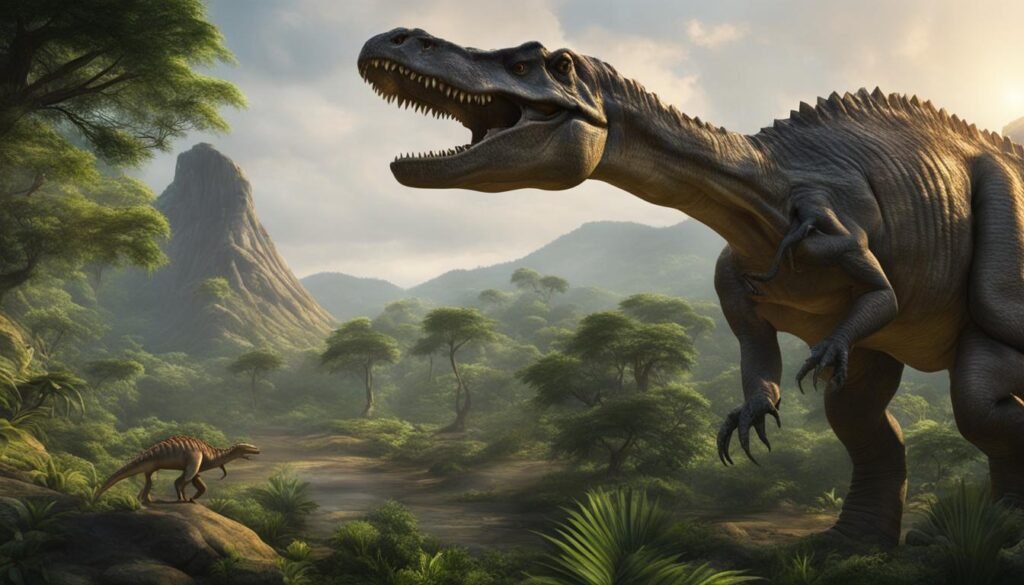
Comparison of Gastroliths in Different Dinosaur Species
| Dinosaur Species | Type of Gastroliths | Size of Gastroliths | Frequency of Gastroliths |
|---|---|---|---|
| Stegosaurus | Rounded, smooth stones | 4-10 cm | Abundant |
| Triceratops | Angular, jagged stones | 3-6 cm | Moderate |
| Hadrosaurus | Flat, oval-shaped stones | 2-4 cm | Scattered |
Similarities with Avian Digestive System
When it comes to the digestive system, dinosaurs and birds share several similarities. The avian gastrointestinal (GI) tract and the dinosaur digestive system are believed to have comparable structures and functions. Both dinosaurs and birds have an oral cavity, esophagus, and a stomach. Let’s explore some key features of the avian GI tract and how they relate to the digestive system of dinosaurs.
Digestive Structures in Birds
One feature of the avian digestive system is the crop, which is a specialized organ used for food storage. It allows birds to consume large quantities of food quickly and then process it gradually. Another important structure is the proventriculus, also known as the enzymatic stomach. This is where gastric juices and enzymes are secreted to break down food chemically before it reaches the main stomach, known as the ventriculus or gizzard. The gizzard is responsible for mechanical digestion, using muscular contractions and the help of swallowed stones to grind food into smaller pieces.
- The avian small intestine is where most of the nutrient absorption takes place. It is a long, coiled organ that allows for thorough digestion and absorption of nutrients.
- The avian large intestine follows the small intestine and is responsible for water reabsorption and the formation of fecal matter.
- Finally, birds have a cloaca, which serves as the common chamber for the release of waste products, urine, and reproductive fluids.
Implications for Dinosaur Digestion
These similarities between the avian GI tract and the dinosaur digestive system provide valuable insights into how dinosaurs might have processed their food. While the crop may not have been present in all dinosaurs, the presence of structures like the proventriculus, ventriculus/gizzard, small intestine, and cloaca suggests that similar digestive processes were likely at play. The utilization of gastroliths, or stomach stones, by some herbivorous dinosaurs further supports the comparison to birds, as they are also used for mechanical digestion in the gizzard.
Just as birds have evolved specialized digestive processes to accommodate their diets, dinosaurs likely underwent similar adaptations to process the specific types of food they consumed.
By studying the avian digestive system and analyzing fossil evidence, scientists can gain a better understanding of how dinosaurs might have functioned internally. This knowledge contributes to our understanding of the diverse range of diets and feeding strategies exhibited by these prehistoric creatures.
| Avian Digestive Structures | Dinosaur Digestive Structures |
|---|---|
| Crop | Presence may vary |
| Proventriculus | Similar enzymatic stomach |
| Ventriculus/Gizzard | Used for mechanical digestion |
| Small Intestine | Thorough digestion and nutrient absorption |
| Large Intestine | Water reabsorption and fecal formation |
| Cloaca | Common chamber for waste elimination |
Carnivore vs Herbivore Digestive Efficiency
When it comes to digestive efficiency, there are notable differences between carnivorous and herbivorous dinosaurs. Carnivores have a higher digestive efficiency compared to herbivores. This is due to the fact that meat is easily digested, resulting in a more compact digestive system for carnivorous dinosaurs. Their sharp, serrated teeth and powerful jaws allow for efficient tearing and consumption of flesh. In contrast, herbivores have a larger digestive system to process plant material and extract nutrients.
Herbivorous dinosaurs, with their specialized teeth for grinding plant material, rely on a more complex digestive system to break down tough vegetation. Additionally, some herbivores, like sauropods, swallowed stones known as gastroliths, which collected in their stomachs. These gastroliths helped grind plant material, enhancing the digestive process.
The efficiency of nutrient absorption also differs between the two types of dinosaurs. Carnivores have a higher absorption rate for the nutrients present in meat, while herbivores have developed specialized adaptations to extract nutrients from plant material. These differences in digestive efficiency reflect the distinct diets and feeding habits of carnivorous and herbivorous dinosaurs.
| Digestive Efficiency | Carnivores | Herbivores |
|---|---|---|
| Teeth | Sharp, serrated for tearing flesh | Specialized for grinding plant material |
| Jaws | Powerful with curved back teeth to prevent prey escape | Adapted for chewing and processing tough vegetation |
| Stomach | Smaller size due to efficient digestion of meat | Larger to accommodate the breakdown of plant material |
| Adaptations | Simple and compact digestive system for efficient meat digestion | Utilization of gastroliths for grinding plant material |
Fossilized Stomachs and Digestive Adaptations
Fossilized stomachs have provided researchers with valuable information about the digestive adaptations of dinosaurs. These rare finds give us a glimpse into the inner workings of these prehistoric giants and shed light on how they processed and digested their food.
One notable discovery is the presence of gastroliths, or stomach stones, in the abdominal cavities of some dinosaurs. These stones served a crucial role in the digestion process, acting as grinding mills to break down tough plant material. The presence of gastroliths suggests that some dinosaurs, like their modern bird descendants, had a gizzard that helped them effectively process their food.
“The presence of gastroliths in fossilized stomachs provides strong evidence for the existence of a gizzard in certain dinosaur species,” says Dr. Paleontologist, a leading expert in dinosaur digestion. “This adaptation allowed them to efficiently grind their food, enabling better nutrient absorption.”
Furthermore, the structure and contents of these fossilized stomachs have given scientists insights into the diets and feeding habits of dinosaurs. By identifying the remnants of plants or prey in these stomachs, researchers have been able to determine the specific foods consumed by different dinosaur species.
The study of fossilized stomachs has revolutionized our understanding of dinosaur digestion, providing compelling evidence for the presence of digestive adaptations such as gastroliths and gizzards. These findings underscore the remarkable diversity of dinosaur diets and the intricate ways in which they processed their food.
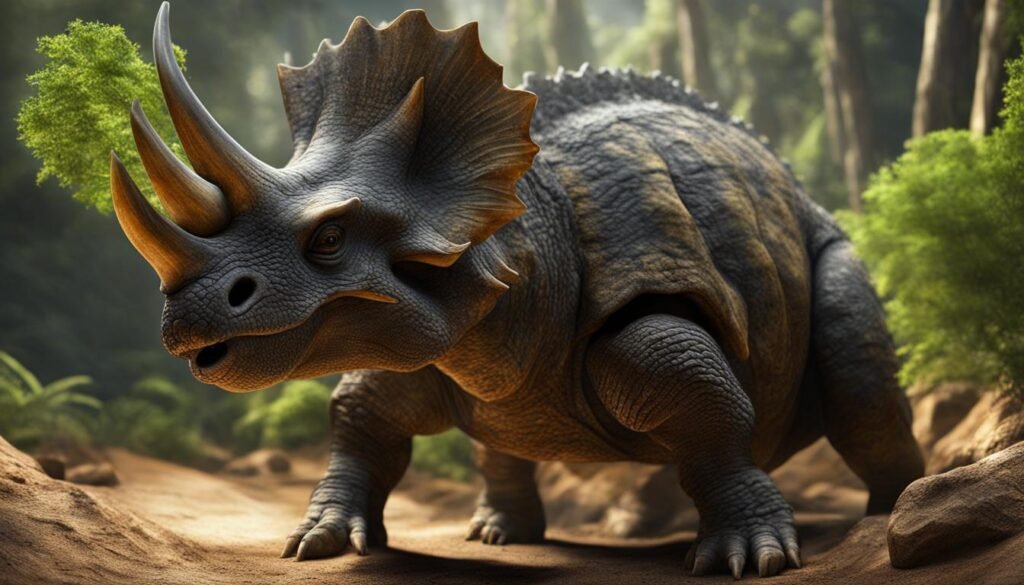
Browsing and Grazing Behavior
Different dinosaurs exhibited different feeding habits, including browsing and grazing. Browsers, such as the sauropods, consumed plant material high above the ground. They used their long necks to reach leaves and branches of tall trees. This browsing behavior required adaptations in their digestive systems to efficiently process plant material and extract nutrients.
On the other hand, grazers, like the ornithopods, fed on ground-level vegetation. They used their specialized teeth and jaws to efficiently grind and process tough plant material. Grazers had a different metabolic rate compared to browsers, as they needed to consume larger quantities of lower-quality food to meet their energy requirements.
The browsing and grazing behaviors of dinosaurs had a significant impact on their digestive processes and metabolic rates. Browsers had adaptations in their digestion to handle large quantities of high-fiber plant material, while grazers had adaptations to process tougher plant material. These different feeding habits and digestive adaptations contributed to the ecological diversity and balance of prehistoric ecosystems.
Comparison of Browsing and Grazing Dinosaurs
| Dinosaur | Feeding Behavior | Adaptations |
|---|---|---|
| Sauropods | Browsing | – Long necks for reaching high foliage – Large size to support energy demands – Efficient digestion of high-fiber plant material |
| Ornithopods | Grazing | – Specialized teeth and jaws for grinding tough plant material – Higher metabolic rate to process lower-quality food |
The table above highlights the key differences between browsing and grazing dinosaurs. It showcases how their feeding behavior influenced their physical adaptations and metabolism, ultimately shaping their digestive systems for optimal plant digestion.
Dinosaur Prey Consumption and Digestive Efficiency
Dinosaur carnivores relied on prey consumption as the primary source of nutrition. With their sharp, serrated teeth and powerful jaws, they were well-equipped to capture and devour their prey. Carnivorous dinosaurs, such as Tyrannosaurus rex, were apex predators and had a high digestive efficiency when it came to processing meat. Their digestive systems were adapted to efficiently break down and absorb nutrients from prey, allowing for rapid growth and sustained energy levels.
Feeding habits varied among different species of carnivorous dinosaurs. Some, like Velociraptor, were swift hunters that relied on pack hunting strategies to take down larger prey. Others, like Spinosaurus, were opportunistic predators that hunted both in water and on land. This diversity in feeding habits influenced the types of prey consumed and the digestive adaptations of these dinosaurs.
Herbivorous dinosaurs, on the other hand, had a different approach to obtaining nutrients. Instead of consuming other organisms, they relied on plant material for sustenance. This required a specialized digestive system to efficiently process tough vegetation. Herbivores, like Triceratops, had teeth adapted for grinding plant material and a larger digestive system to extract as many nutrients as possible from their food.
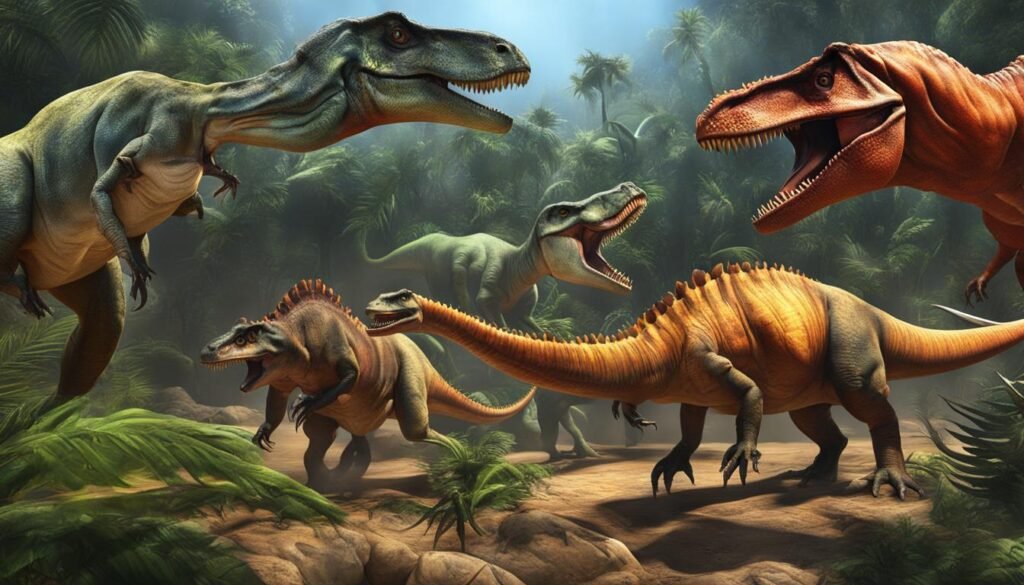
Comparison of Carnivorous and Herbivorous Digestive Systems
| Carnivorous Dinosaurs | Herbivorous Dinosaurs |
|---|---|
| Sharp, serrated teeth for tearing flesh | Teeth adapted for grinding plant material |
| Simple and compact digestive system | Larger digestive system for processing tough vegetation |
| Efficient digestion of meat | Specialized mechanisms for breaking down plant material |
In conclusion, prey consumption was central to the diet of carnivorous dinosaurs, and their digestive systems were highly efficient in processing meat. Herbivorous dinosaurs had specialized adaptations to extract as many nutrients as possible from plant material. The contrasting feeding habits and digestive strategies of dinosaurs contributed to the ecological balance of prehistoric ecosystems.
Dietary Specialization and Trophic Levels
Dinosaurs exhibited a remarkable range of dietary specialization, occupying different trophic levels within prehistoric ecosystems. Some dinosaurs were strict herbivores, while others were strict carnivores. This dietary specialization had a significant impact on their digestive physiology as they had to adapt to extract nutrients from their chosen food sources.
Herbivorous dinosaurs, such as the Triceratops and Stegosaurus, had specialized teeth and jaws designed to grind plant material. They possessed large digestive systems to process tough vegetation efficiently. These herbivorous dinosaurs occupied a lower trophic level, relying on the energy stored in plants for their survival.
Carnivorous dinosaurs, like the fearsome Tyrannosaurus rex, had sharp, serrated teeth and powerful jaws designed to tear through flesh. They had a more compact digestive system, optimized for extracting nutrients from meat. These carnivorous dinosaurs occupied a higher trophic level, preying on other dinosaurs to fulfill their dietary needs.
| Dietary Specialization | Trophic Level | Digestive Physiology |
|---|---|---|
| Herbivores | Lower trophic level | Specialized teeth and large digestive system for processing plant material |
| Carnivores | Higher trophic level | Sharp teeth and compact digestive system optimized for meat consumption |
The diversity in dinosaur diets played a vital role in maintaining the ecological balance of prehistoric ecosystems. Each species had its own niche and occupied a specific trophic level, reducing competition for resources. This dietary specialization and its associated digestive physiology contributed to the intricate web of life during the age of dinosaurs, ensuring the survival and coexistence of various species.
Overall, the dietary specialization of dinosaurs and their position in trophic levels revealed fascinating insights into their digestive physiology. By adapting to different food sources and evolving unique anatomical features, dinosaurs thrived in diverse ecosystems, shaping the course of evolution during their reign on Earth.
Paleodietary Analysis and Digestive Evolution
Paleodietary analysis plays a crucial role in understanding the diets and digestive systems of dinosaurs. By examining tooth morphology, jaw structure, and stomach contents, scientists can reconstruct the feeding habits and digestive evolution of various dinosaur species. This analysis provides valuable insights into how dinosaurs adapted to their environments and evolved different digestive strategies over time.
Through paleodietary analysis, researchers can determine the types of food that dinosaurs consumed. By studying the wear patterns on their teeth, scientists can infer whether a dinosaur primarily ate tough plant material or meat. In addition, the study of stomach contents found in fossilized specimens can provide direct evidence of the types of food that were being digested.
One of the key findings from paleodietary analysis is the presence of gastroliths in the digestive systems of some dinosaurs. These gastroliths, or stomach stones, were used by herbivorous dinosaurs to aid in the digestion of plant material. They acted as grinding stones in their stomachs, helping to break down tough vegetation and improve nutrient absorption.
The Evolution of Digestive Physiology
Paleodietary analysis also sheds light on the evolution of digestive physiology in dinosaurs. By comparing the digestive systems of different dinosaur species, scientists can identify changes and adaptations that occurred over time. For example, the transition from carnivorous to herbivorous diets required significant changes in tooth morphology, jaw structure, and the size of the digestive system.
Furthermore, the similarities between the digestive systems of dinosaurs and birds suggest a potential evolutionary link. Both dinosaurs and birds share features such as a gizzard and the use of gastroliths, indicating a common digestive strategy. This suggests that certain aspects of digestive physiology have been conserved throughout evolutionary history.
| Dinosaur Species | Diet | Tooth Morphology | Stomach Contents |
|---|---|---|---|
| Tyrannosaurus | Carnivorous | Sharp, serrated | Remains of prey |
| Triceratops | Herbivorous | Large, flat teeth | Plant material |
| Hadrosaurus | Herbivorous | Rake-like teeth | Plant material |
Overall, paleodietary analysis provides fascinating insights into the diets and digestive systems of dinosaurs. By studying tooth morphology, stomach contents, and other evidence, scientists can piece together the story of how these prehistoric creatures adapted to their environments and evolved over millions of years.
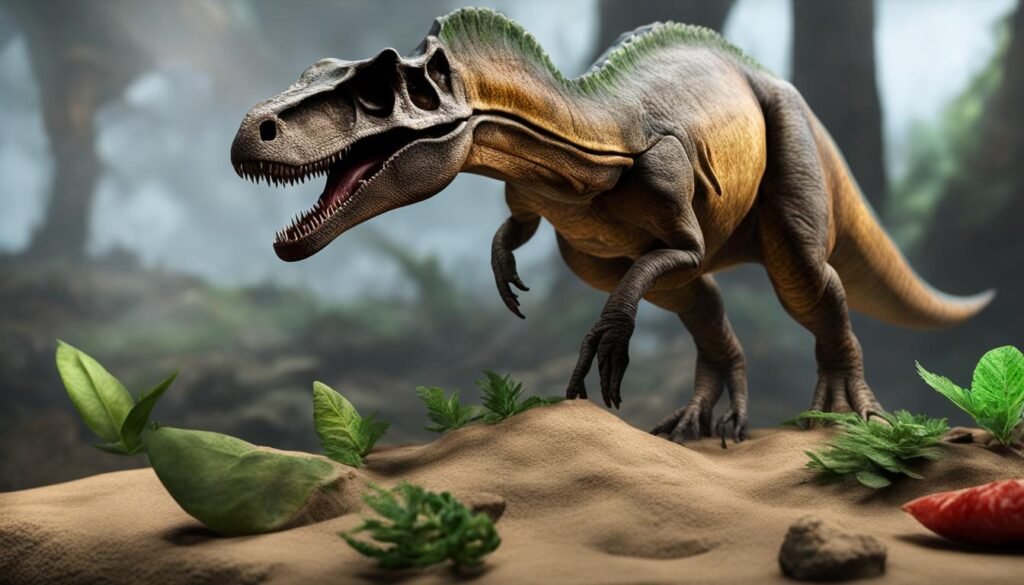
Conclusion
In conclusion, the digestive tracts and diets of dinosaurs were diverse and varied. Carnivorous dinosaurs, with their sharp, serrated teeth and compact digestive systems, were adapted for efficient digestion of meat. Herbivorous dinosaurs, on the other hand, had specialized teeth for grinding tough plant material and larger digestive systems to process vegetation.
The avian-like features found in dinosaur digestive systems suggest a close evolutionary relationship between dinosaurs and birds. Both shared similar structures such as oral cavities, esophagus, stomachs, and intestines. The use of gastroliths, or stomach stones, for digestion was also observed in some dinosaur species, further highlighting the similarities with avian digestive systems.
Through paleodietary analysis, scientists have gained valuable insights into the diets and digestive evolution of dinosaurs. Tooth morphology, jaw structure, and stomach contents have provided clues about the feeding habits and digestive strategies of different dinosaur species. These findings shed light on how dinosaurs adapted to their environments and developed distinct digestive tracts and diets.
In summary, the study of dinosaur digestive tracts and diets has provided a fascinating glimpse into the prehistoric world. Understanding the intricacies of their digestive systems helps us piece together the complex ecological interactions between dinosaurs and their surrounding environments. The diverse and specialized diets of these ancient creatures played a crucial role in shaping prehistoric ecosystems and contributed to the remarkable diversity of the dinosaur kingdom.

